I recently purchased a used Gaggia Classic machine on Amazon. After realizing that it was not as “lightly used” as the seller denoted, I took apart the entire machine to clean it up. I’ve written this guide as a teardown guide, but feel free to read it from bottom-up to get a clear understanding of how to assemble this machine. Feel free to drop a comment if you have any questions or information to add.
Tools
Before you start out, I would recommend purchasing a few tools (most available at your local hardware store):
- Brass brush
- Metric allen wrench set
- Citric acid or espresso machine cleaner
- Phillips screwdrivers
- Pliers or a crescent wrench
Note: You can buy citric acid at many bulk food stores for a reasonable price
Remove the Boiler
Begin by removing the two attachment screws on the top of the machine by the water spout. The top plastic water spout / sheet metal assembly should pull off towards the back of the machine.
Next, pull the steam wand knob off (it might take a bit of effort). Note that the valve in the photo above is a bit offset, this is due to my machine being damaged. Yours should (hopefully) be centered in the hole. You’ll also want to pull the push-on connectors off of the power connector on the rear of the machine, and pull all the cables off of the front switch. I recommend numbering each of these connectors before pulling them off so you can easily reconnect them.
Flip the machine over and use allen wrenches to remove the four bolts attaching the group to the chassis.
After removing these screws, your boiler should be free. Remove the boiler from the chassis and place it in a clean work area. Note that things might get messy and/or moist very soon.
Using a standard or crescent wrench, remove the chromed steam wand from the copper steam pipe. This will allow you to set the group down on a flat surface without damaging the copper pipe.
Next, detach the electronics and pump from the machine. You will need to detach the pump hose from the OPV and unplug all push-on connectors. If you leave your wire assembly as-is after you unplug all connectors (don’t bend or crush the wires!) you should be able to easily see where all of the wires connected to for reassembly.
To make life easier, remove all hoses from the machine. You should only need to remove the 3-way solenoid hose and the OPV hose at this point.
Now flip the boiler on its side. You’ll see a phillips screw head in the middle of the shower screen.
Remove the phillips screw from the shower screen, and then pull off the shower screen itself. If it is stuck due to calcification or coagulated coffee compounds, use a small flathead screwdriver to pry it off.
Now grab an allen wrench and take off the metal block that resides under the shower head. You should now be able to see the top of the group.
Using a plastic spudge, flathead screwdriver, or even your fingernails, carefully pry up the rubber gasket from inside the group.
Now flip your boiler assembly back up on end.
Using a wrench, remove the steel nut from the top of the solenoid valve. The black solenoid coil should slide off freely. Next, unscrew both of the thermal switches from the top and the side of the boiler. The high temperature switch goes on top, and the low temperature (brew) thermal switch goes on the right side of the boiler.
Now remove the solenoid valve assembly from the boiler using an allen wrench. You might want to take out the rubber o-rings for cleaning if they are badly calcified.
At this point you can unscrew the hose fitting on the top of the OPV. This is most easily done when the assembly is still attached to the boiler.
Now unscrew the entire OPV assembly from the boiler. Once again, you might want to remove the rubber o-rings for cleaning if they are looking shabby.
Now is the time to remove the steam valve. This step can be a bit tricky, especially if your machine is older. I recommend removing the two bolts and twisting the valve back and forth. After some twisting, use a flathead screwdriver to carefully pry each side of the valve until it comes free. Don’t be too aggressive, as brass is a soft metal. You’ll probably want to remove the rubber gasket as well, mine was very calcified.
Next, remove the four bolts attaching your boiler to your group, and your machine should be fully disassembled! You’ll want to remove the rubber gasket from its slot in the group, if you have an older machine this gasket and its slot will definitely need some cleaning.
Cleaning
Your boiler probably looks something like the photo above and/or it might look white with calcification. Pretty nasty. If you have a lot of white calcification, a brass brush (available at most hardware stores) will take care of it. If you have a lot of oxidation and black residue like I had, a dremel tool with a stainless steel brush attachment will get the job done.
Above is my boiler after significant dremeling and brass-brushing. It’s not great, but it’s good enough for me. Although the aluminum around the seal is very pitted, I haven’t experienced any leaks whatsoever.
To clean the rest of your components, I recommend soaking them in a solution of citric acid or special-purpose espresso machine cleaning solution (available at many online retailers). This will remove significant amounts of calcification.
If your machine is as old as mine, you might need to do some more intensive cleaning. Try using a brass brush with your citric acid or espresso machine cleaner solution. Use the brush to clean off brass fittings (especially the steam valve fitting), the group, and any other metal components. This should take off any lingering calcification or other gunk.
Now that you’ve cleaned everything up, it’s time to put things back together! If you need additional help, just read this guide backwards to get a good idea of how to re-assemble machine.
![[protofusion]](http://protofusion.org/wordpress/wp-content/uploads/2013/02/protofusion-text2.png)
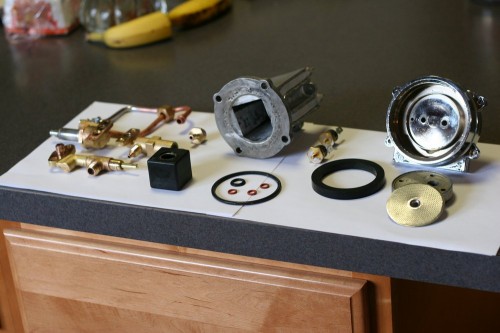
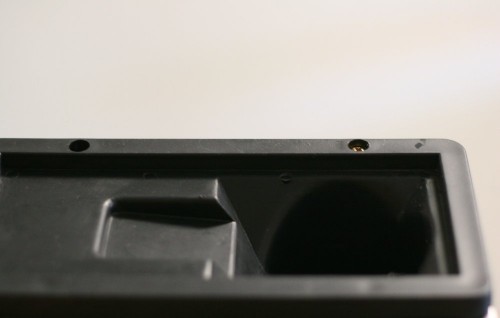

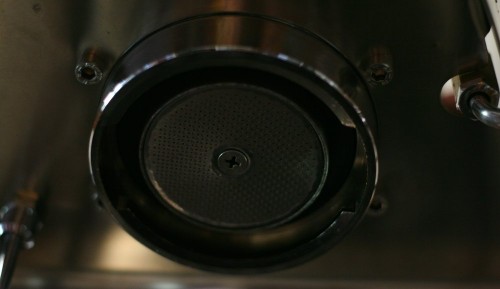
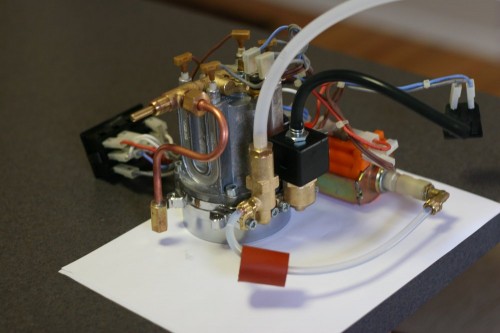
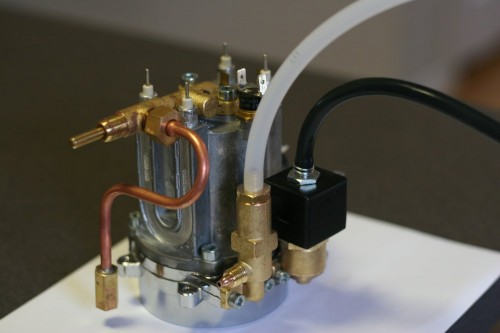
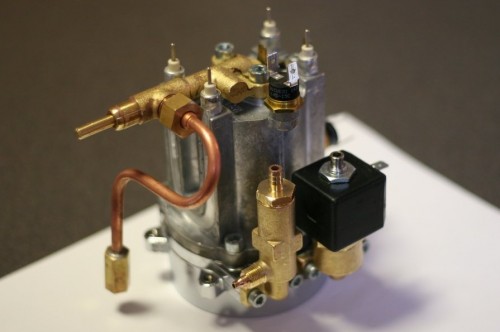
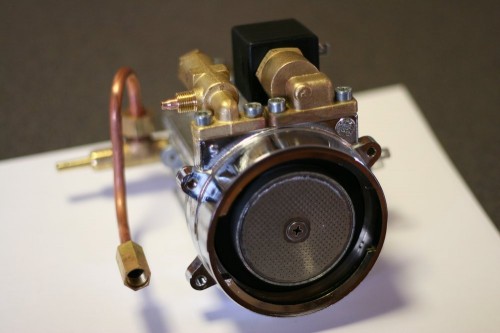
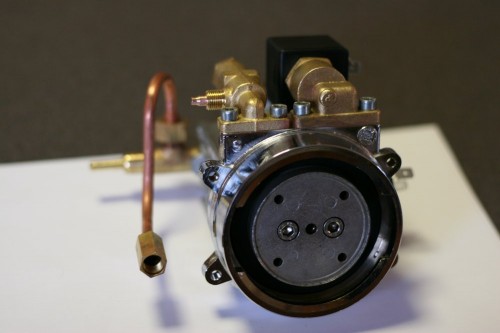
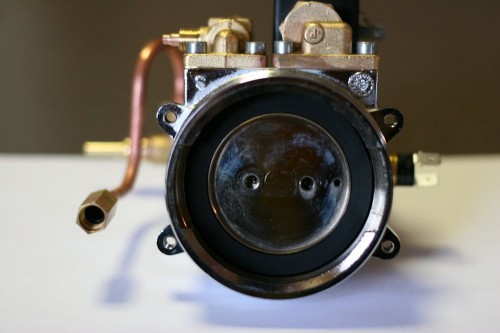
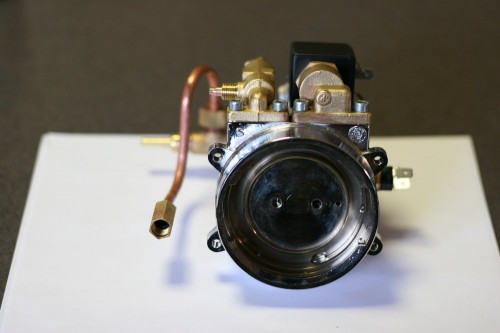
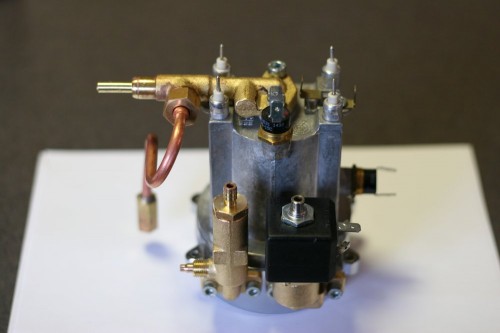
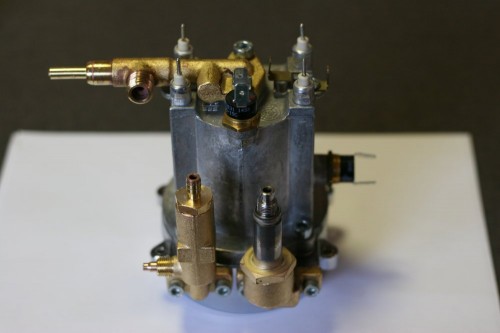
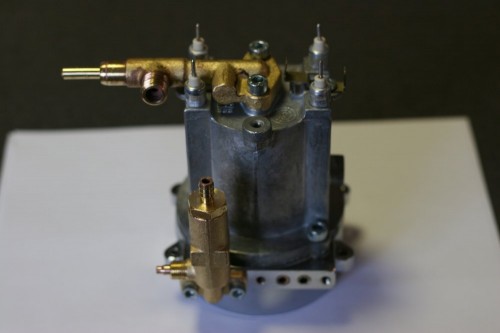
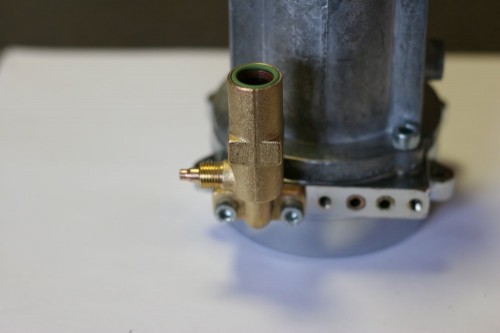
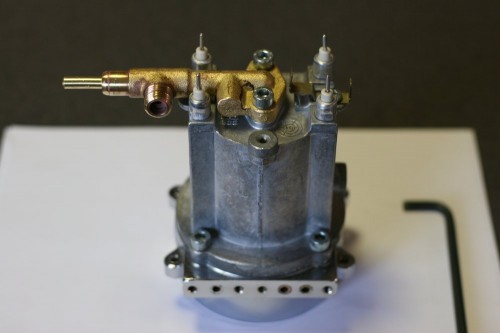
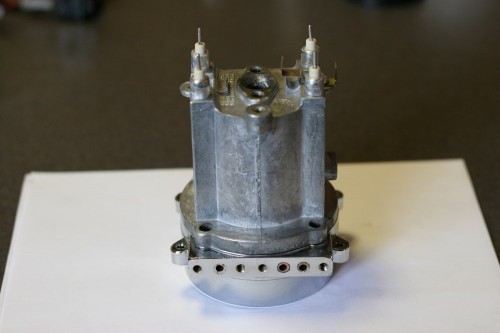
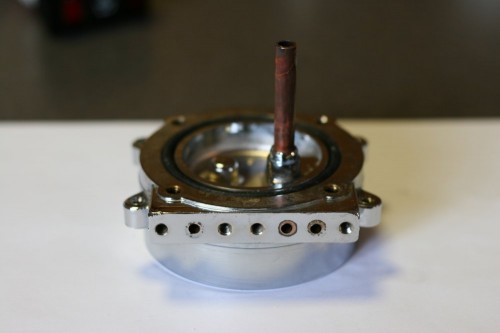
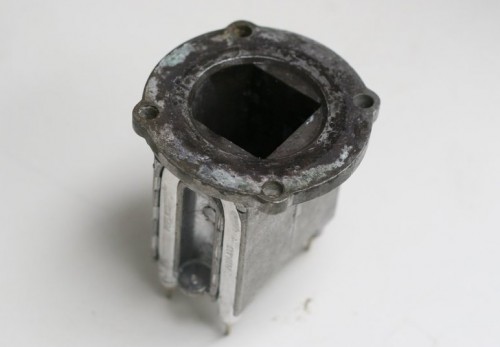
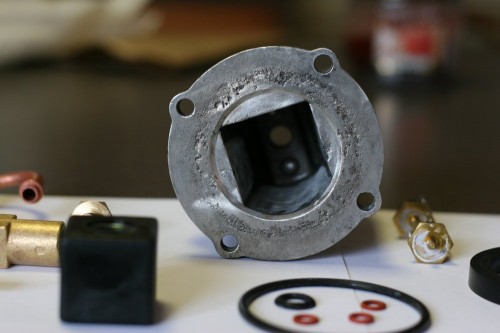
Hi
this is a great explaination thank you.
i followed all the steps to clean out all the parts as the water flow through the machine had slowed.
I cleaned and put back together and the machine heats up and makes the right sounds but like many other people have experienced on this thread that now i have no water flow at all. The steamer section works fine. am i missing something ? nothing changed except a clean out which in theory it should flow better.
any thoughts or help appreciated.
thanks
Hi Heath
These comments apply to the Gaggia Classic version with the cast aluminium boiler not the mark 2 version with the stainless steel boiler.
1. You have water flow from the steamer so the pump and solenoid valve are ok.
2. With the boiler and the water flows from the boiler down the copper pipe. Crud can collect in the bottom of this pipe and block the flow to the group head and shower screen. This is a narrow contorted passage and in my case was blocked giving a very low flow of water. Check that with the screen removed that a good steam of water comes out of the small hole to the left of the two bolts when looking up into the group head.
I used a cocktail stick to clean the obstruction and a good soak in Caffiz.
If your problem is the one I have experienced there will only be a feeble dribble. You should be able to fill an expresso cup in less than 15 seconds TAKE CARE as this can be hot water if the machine has heated up!
hi Heath
i bought a used gaggia espresso machine but this a 2 head group 240v the head group that you are taken apart here looks like mine!!
ok my problem is im only getting water out of one head group i just cant find any help on how to take it apart
i would like to send you some pics and see if you’ll be kind enough and give me some advice thank you
sincerely
carlos g
I psyched myself up to disassemble my 10 year old Classic Gaggia as described here (it’s looks daunting but well explained). I need to give it a good clean as it is now completely blocked and repeated attempts to descale it don’t help. However my problem is with the very first step: when I try to unscrew the two attachment screws on the top of the machine they turn but neither one comes out, and the top can’t be removed. I tried pushing the screw from below (there are openings on the back into which you can slip a screwdriver and potentially apply upward pressure on the screws) but no success. I’d be grateful for any advice. Thanks!
Hi Ethan,
six years on, and it’s still proving an invaluable tool for servicing your Classic Gaggia. Great instructions.
Sadly, the four allen bolts couldn’t be removed, so boiler only soaked overnight as I couldn’t attack from within: Still, a few teaspoons of crud came out the following day! – that’s why water flow was intermittent. Now works perfectly, with a constant water flow. Cheers from Belgium in 2018.
Glad to hear it’s still a useful resource! Hope your Classic keeps serving you well for years to come.
Hello Ethan and Gaggia pros,
I just purchased a preloved Classic and as soon as I turn it on there’s an electrical smell that comes out. So I turned it off right away. Do you know where it could be coming from? Or has anyone faced this issue before? I’ll try and find a technician to look into it but I live in Dubai and it might be hard to find. Any help appreciated! Grazie!
Great info–thanks for posting!
Some additional info, FYI:
Video of disassembly:
https://www.youtube.com/watch?v=N9i-EH7qXOc&feature=youtu.be
The company that makes that video has a really good price on boilers, if it needs replacement. (Their price on gaskets is very high.)
https://www.wholelattelove.com/alum-boiler-120-220-240-v-assy
There’s several companies on Amazon that offer a kit with all needed gaskets, for rebuild:
https://www.amazon.com/GAGGIA-Classic-parts-set-kit/dp/B07FPF4GDF/
A P.S. to my last post:
A long hex-head wrench really helps in removing the boiler. I liked this one:
https://www.amazon.com/gp/product/B000189QVU/
Hi Ethan, very good tutorial, following your example I’ve disassembled cleaned and assembled again my Gaggia Baby.
But I need your help again.
Disassembling I’ve found no particular problem. With air compressor I’ve verified no obstruction to the passage of the water, the pump tested alone works, but when I try to use the Gaggia, I hear the sound of the pump, vapor exit regular and also water from vapor nozzle but no water exit to make coffee even without filter.
Can you suggest me what more test I need to do to find/solve the problem ?
Thanks and have a good day..